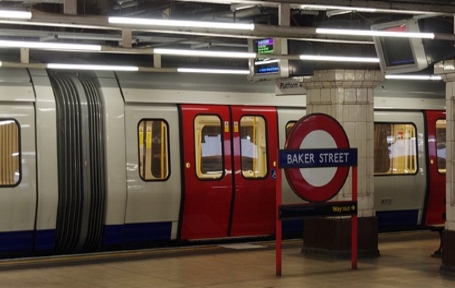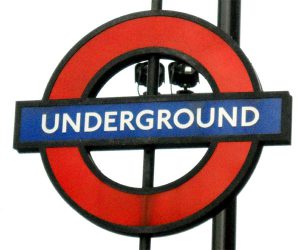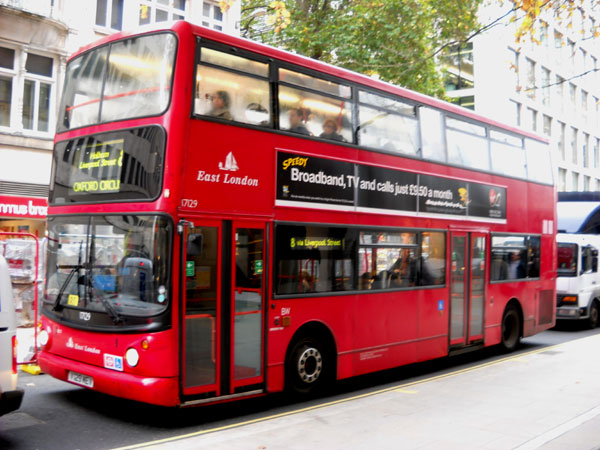This page contains an overview of the various means of transport in London and information about the most important tickets for tourists.
Our excursion tip
Harry Potter tour from London to the film studios outside the city. It is currently the most popular day trip from London >>> Book the tour
What public transport is there?
London has one of the largest public transport networks of any city in the world. The network consists mainly of subways and buses. Trams did not exist for a long time. For about 20 years there have been some modern tram lines in the south of London. Further trams are planned. There are 6 newer lines of the so-called DLR (Dockland Light Railway) as well as regional trains (London Overground). DLR’s driverless trains operate in the east of London, especially in the gigantic new development Docklands, the former largest port in the world. City buses run practically everywhere in London, as do the approximately 11 underground lines. The two systems are largely independent of each other.
Our tip: London PassThe best city ticket for tourists. It includes free entry to the Tower, London Zoo, Westminster Abbey, Windsor Castle and The Shard skyscraper. Plus a city tour by bus and a great boat trip on the Thames. A total of about 85 attractions included! The London Pass is available for 1 day or several days (up to 10 days). Pays off for almost every tourist who wants to visit the sights and the city of London. Our recommendation for a city trip to London! >>> More info and booking |

Which ticket is best for me?
The London Oyster Card is especially interesting for the tourists. It is a plastic card on which money can be loaded. With every trip by bus, tram, subway etc., an amount is automatically debited. The price also depends on the zones you want to use. Almost all sights in London are located in the zones 1 and 2. An Oyster Card is available at every counter of the London public transport. If you buy an Oyster Card, you should immediately load money onto the card. An Oyster Card costs only 5 Euro deposit, which you get back at the end of the journey to London, if you return the Oyster Card. Theoretically, there are also other tickets without an Oyster-Card (paper tickets against cash), but these are incredibly expensive. You pay almost 5 pounds for a one-way ticket. With the Oyster Card, a one-way trip in zones 1 to 2 costs only about 2.40 pounds (early 2018).
Day Ticket London
The best thing about the Oyster Card is that it automatically becomes a day pass if you travel several times a day. For example, if you travel in zones 1 and 2 for more than 6.60 pounds in a day, you won’t pay anything extra. Always make sure you have enough money on your Oyster Card. With the Oyster Card, you also get relatively cheaply to the airport Heathrow. Also to the airport in Gatwick, the Oyster Card is supposed to be valid for some time (information status at the beginning of 2018).
>>>> Our page on all trains and buses to all major London airports.

Other Tickets
Especially week tickets are still an option for tourists in London. Depending on the zone, they start at about 33 pounds and are usually loaded onto the Oyster Card. In London, there are still ticket counters at many major stations (including underground stations) where you can get advice. Of course, you should be able to speak English at the ticket counter. Weekly tickets are actually 7-day tickets. You can buy them for every starting day, for example from Thursday to Wednesday. For people who stay longer in the capital of Great Britain, there are also monthly tickets and so on. Some ferries on the Thames can also be used with the Oyster Card.
Fare evasion is almost impossible in London. You have to insert your ticket into a machine both at the start and at the end of your journey. Only a valid ticket opens the passage. On buses, you have to show your ticket to the driver when boarding. On the Dockland Light Railway you can try your luck at fare evasion. However, this is not worthwhile. The penalties for fare evasion in London are very high.
The most popular excursion by boat on the ThamesMeanwhile, a large proportion of London tourists take a boat trip on the Thames. Of course, everyone wants to see central London from the boat. The most popular boat tour is therefore from Westminster to Greenwich, i.e. across the centre of London. Very often booked tour, you should book online in advance: >>> At Getyourguide you can buy tickets for the ships on the river Thames |
Our excursion tip
Harry Potter tour from London to the film studios outside the city. It is currently the most popular day trip from London >>> More information
By the way, fare evasion is almost impossible in London. In the subway, you have to put one’s ticket into a vending machine both at the beginning and at the end of the journey. Only with a valid ticket, the passage opens. In the buses, you show the ticket to the driver at the entrance. In the Dockland Light Railway you can try your luck at fare evasion. But this is not worth it. The penalties at the frequent controls for black driving in London are very high.
The individual means of transport
Underground London (Tube)

The underground in London is officially called London Underground, but the locals often simply call it “tube”. The London Underground is the largest in the world. All 11 lines together have a length of more than 400 km (without the 6 lines of the DLR, which is operated separately). The longest subway line, the Central Line, is over 70 km long. This one line alone has 200 million passengers per year. Some subways are old and narrow, but the newer lines and trains are hypermodern. The London Underground is the oldest in the world. The first underground train was in London in 1863 (with a steam locomotive). There are currently about 275 underground stations in London.
All subway lines have a color and a name. The Circle Line runs in a circle around the city centre (distance good 20 km)- All other lines run more or less in two directions out of the city centre. During rush hours, trains run every 2-3 minutes, also in other times very frequently. The subway does not run at night, but there are many night buses. More information about the underground
Buses in London

The buses in London are still red and the majority are double-decker. There are an incredible number of buses. Often the buses even jam in front of the bus stops. On the buses in front there is always the line number and the final destination. The drivers are usually very helpful. You can simply ask how to get to your destination. Since the city centre of London is subject to tolls for cars, the buses are even more popular. Especially on short distances, the bus is often faster than the subway. As a tourist, you naturally see much more of London in the buses than in the underground. There are also buses that drive right through London, a very cheap city tour.
Trams in London
There used to be a lot of tram lines in London. They were all discontinued. Since about 10 years there are some new lines, but not in the centre. In the London tram the tickets are valid as in the bus or in the underground. The system is called Tramlink. The trams only run in the south of London, for example in the districts Wimbledon and Croydon..
London Tramlink is a light rail system that connects the suburbs of south London, particularly Croydon, with the surrounding areas. It opened in May 2000 and is operated by Tram Operations Limited, a subsidiary of FirstGroup.
The network consists of three lines covering a distance of about 28 km and serving a total of 39 stations. The eastern line :
Route 1 (Elmer’s End to Croydon) :
The route runs from Elmer’s End in the east to Croydon in the west. It has 14 stations and covers a distance of about 8 km.
Route 2 (Beckenham Junction to Croydon):
The route runs from Beckenham Junction in the east to Croydon in the west. It has 15 stations and covers a distance of about 8 km.
Route 3 (New Addington to Wimbledon):
The route runs from New Addington in the south to Wimbledon in the north. It has 10 stations and covers a distance of about 12 km.
Trams run every 10-15 minutes during the day and every 30 minutes at night. The first tram leaves the terminal around 5am.13:30: The last tram leaves around 1am.30h
The London Tram is an important part of the public transport system in South London, providing a fast and reliable service to commuters and residents. It is also a popular tourist attraction and offers a unique way to see the sights of Croydon and the surrounding area.
The trams are modern, air-conditioned and wheelchair accessible. It has CCTV cameras and ticket machines and accepts cash, credit cards and Oyster cards (the same card used on the London Underground). Fares are zone-based and integrated with the Transport for London (TfL) network, allowing passengers to use their Oyster card to travel between trams, buses and trains.
Since its opening, London Tramlink has faced various challenges, including tram accidents, delays and overcrowding. However, it remains an important part of the transport system in South London and continues to provide a fast and efficient service to its passengers.
London by bike
The good alternative is to explore London by bike. You can rent bicycles in many places in London, most hotels are happy to help. Organised bicycle trips through the city centre and some parks are also great. An inexpensive tour that includes many sights has a particularly good reputation: more information here.
Rome Metro Bus Venice Vienna Pass Buy Online